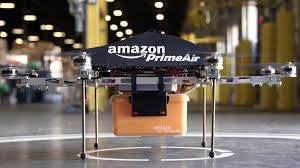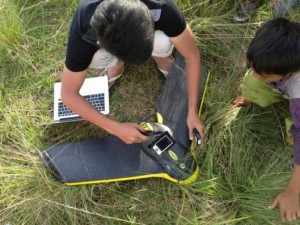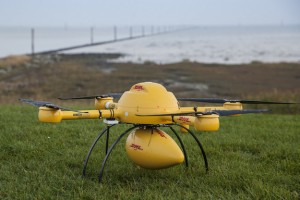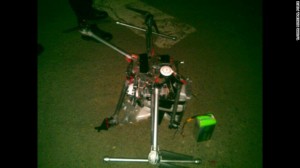Technology keeps evolving at speeds the average person can’t keep up with. It could be in the form of a new game, a cool option in a new vehicle, or it could mean life or death to a patient having surgery. From California to Massachusetts, robots are assisting surgeons in the operating room and in patient’s rooms. I’ve touched on a few of the models from 1985 to now, the improvements in it’s surgical abilities, the improvements doctors would like, and the safety to patients it may or may not provide. We are a technologically driven world with endless possibilities for robots that is well beyond our mortal imaginations.

The Puma 560
Robot-assisted surgery began in 1985 with the invention of the PUMA 560 which had only one large, bulky arm. In 1987 the PUMA 560 performed one specific surgery, a neurosurgical biopsy, which is a non-laparoscopic surgery. In 1987, the PUMA 560 was used to perform another type of surgery, the cholecystecotomy. A transurethral resection was performed using the system in 1988. In 1990 the AESOP system was produced by Computer Motion and was the first robot system to be approved by the FDA for it’s endoscopic surgical procedure. The da Vinci System, with multiple arms, made it’s debut in 2000, and was the first to be approved by the FDA for general laparoscopic surgeries. The da Vinci is used in both pediatric and adult surgeries, but is limited to neurological, urological, gynecological, cardiothorcic, and many general laparoscopic surgeries. The advancements in robotic-assisted surgery have evolved since 1985 and will no doubt continue.

 Matt Vella, writer for Fortune, tells us about a droid robot called the RP-VITA. This robot was co-developed by InTouch Health and iRobot, the company that made the well known Roomba Vacuum, the circular disc that glides around our home by itself . Dr. Jason Knight, Irvine, CA. began testing the RP-VITA in 2012. The RP-VITA is on wheels and easily maneuvers autonomously through hospitals. The head of the robot is a video monitor (seen above) equipped with a high-definition camera that can zoom in on the patient for a closer look. “It’s as if you’re there, and in a way, you are.” (Dr. Jason Knight). Knight uses a laptop or ipad to control the robot to go to a particular patient’s room where he is able visit the patient, access their medical chart, lab tests, and x-rays. The monitor’s screen allows Knight to be seen by the staff, patient, family members, and hospital staff. Anyone in the room can see and speak with the doctor and he with them. The RP-VITA robot helps physicians see many more patients in one day compared to physically traveling from hospital to hospital. So far the only problem doctors find is that the RP-VITA can’t touch or smell. Sometimes these senses are essential for an accurate diagnosis.
Matt Vella, writer for Fortune, tells us about a droid robot called the RP-VITA. This robot was co-developed by InTouch Health and iRobot, the company that made the well known Roomba Vacuum, the circular disc that glides around our home by itself . Dr. Jason Knight, Irvine, CA. began testing the RP-VITA in 2012. The RP-VITA is on wheels and easily maneuvers autonomously through hospitals. The head of the robot is a video monitor (seen above) equipped with a high-definition camera that can zoom in on the patient for a closer look. “It’s as if you’re there, and in a way, you are.” (Dr. Jason Knight). Knight uses a laptop or ipad to control the robot to go to a particular patient’s room where he is able visit the patient, access their medical chart, lab tests, and x-rays. The monitor’s screen allows Knight to be seen by the staff, patient, family members, and hospital staff. Anyone in the room can see and speak with the doctor and he with them. The RP-VITA robot helps physicians see many more patients in one day compared to physically traveling from hospital to hospital. So far the only problem doctors find is that the RP-VITA can’t touch or smell. Sometimes these senses are essential for an accurate diagnosis.

Intuitive,the maker of the da Vinci system, boasted that the technology was so advanced that it “overcomes many of the shortcomings of traditional open surgery, notably less blood loss and a faster recovery”. It was introduced and approved by the FDA in 2000. In 2012, Intuitive sold the da Vinci at more than $1.5 million each to hospitals. They also sell the maintenance agreements for the system. Intuitive’s total revenue topped $2 billion, and stock increased making their market value more than $20 billion. But in recent years, concerns regarding safety to patients and the lack of proper training of physicians has come to light. Greenburg said that a CNBC Investigations Inc. review revealed three serious problems. One, there is a rise in complaints and lawsuits reporting injuries (burns and tears to internal organs) and even death to patients when doctors used the da Vinci. Two, it found that surgeons are operating the da Vinci with inadequate training and supervision, and three, sales people from Intuitive are putting pressure on hospitals and doctors to purchase the da Vinci to be more competitive with other hospitals, when in fact Intuitive sales people are really trying to meet their quarterly quotas. The FDA admits that many more injuries and complications due to using the da Vinci system may not have been reported.
John Markoff of the New York Times, focuses on the research being done to improve on the skills of medical robots. Markoff begins by saying that “With funding from the National Science Foundation and two private donors, scientists at the University of California, Berkeley, will establish a research center intended to help develop medical robots that can perform low-level and repetitive surgical tasks, freeing doctors to concentrate on the most challenging and complex aspects of the operations they perform”. The center’s founders are Ken Goldberg, professor of engineering at the university and a founder of the new Center for Medical Robotics for Automation and Learning , Pieter Abbeel, professor of electrical engineering and computer science, and Sachin Patil, a post doctoral researcher. The da Vinci System, used worldwide today, is operated and controlled by surgeons sitting at a nearby “workstation” in the operating room. The current da Vinci system cannot perform tasks without humans at the controls, but Dr. W. Douglas Boyd, a professor of surgery at the University of California Davis Health System, is working with the team at the Berkeley research center to obtain this goal. Together they have undergone experiments to teach the da Vinci to learn from a human-Dr. Boyd. This is just the opposite of doctors learning to use the robot. The Berkeley team worked together and taught the system to make a circular incision and cut out small pieces of cancerous tissue on it’s own. Although the task was performed correctly, it proved not to be too much faster than a surgeon. This small step could lead the researchers to teach robots even more skills that increase accuracy, decrease poor training, and shorten surgery time. All benefits to the patient’s safety and recovery time.
Works Cited:
Greenberg, Herb. “Robotic Surgery: “Growing Sales, but Growing Concerns”. CNBC
13 March 2013. (web) 23 March 2015
The da Vinci Surgery System, manufactured by Intuitive Surgical, is the main focus of Greenberg’s article. The CNBC researchers found that the Intuitive company has reported billions in sales and continually promotes the system to doctors and hospitals. Interviews with former Intuitive sales people revealed aggressive tactics are used to meet sales quota. While Intuitive’s revenue grew, so did complaints regarding patient safety and inadequate training for surgeons. Many lawsuits due to deaths and injuries resulting from surgeons who used the da Vinci system are still in litigation. The patient and family stories are intriguing yet sad. “More important than the device, is the quality of the surgeon.” (Dr. Peter Dunn, Mass General).
Maroff, John. “New Research Center Aims to Develop Second Generation of Robots”.
New York Times 23 Oct 2014. (web) 26 Mar 2015.
The University of California, Berkeley, received funding to establish a research center with the intent to further the development of robots to perform some of the repetitive and less critical low-level surgical tasks. Surgeons would then be able concentrate on the more critical and complex tasks. Currently the da Vinci Surgery System is widely used, but it is not fully automated and unable to perform surgery on soft tissue and lack tactile feel and sensation. Research reports have stated that robotic surgery is neither better nor faster than conventional surgery, and found that many doctors were not adequately trained to use the da Vinci. The new research center is working with Dr. W. Douglas Boyd, a professor of surgery at the University of California Davis Health System as well as the Center for Robotic Surgery in Singapore. Dr. Boyd said “There are no bad robots, there are just bad surgeons”. He feels that hospital administrators are purchasing the da Vinci in order to compete with other hospitals, and are neglecting to provide the proper training necessary for surgeons. The center is gaining ground on improving the skills of the da Vinci to perform without human guidance.
Vella, Matt. “The Robot Doctor Will See You Now”. Fortune. 19 Oct. 2012
(web) 22 Mar 2015.
Since 2011, an autonomous robot called the RP-VITA, approved by the FDA, is being tested by Dr. Jason Knight, of Irvine, CA. The robot independently glides on wheels in hospital corridors and doctors can direct it to a patient’s room via laptop or ipad. The RP-VITA has a video monitor that enables doctors to see patient’s information and evaluate them as if he were there. Dr. Knight, the patient, and their family can see and speak with each other. Without having to spend time driving from hospital to hospital, doctors can care for more patients in one day. “This is the way of the future,” said Dr. Knight.
Samadi, M.D., David B. “History of Robotic Surgery”. Robotic Oncology. (web)
26 Mar 2015.
Dr. Samadi takes us from the first use of a surgical robotic procedure in 1985 with the PUMA 560, to the present time using the da Vinci system. The first robot was named the PUMA 560. The da Vinci is the first to have 3-D vision, and arms much smaller in diameter than the PUMAS 560. Dr. Samadi hopes that one day advancements in the technology of robotic surgery systems will enable systems to replicate the feel and sensations normally felt by the surgeons. This is only one of the many goals that research scientists and surgeons are striving to achieve.
McNamee, David. “Are Robots the Future of Surgery, Or a Pricey Marketing Gimmick?”. Medical News Today. August 2014.
(web) 21 March 2015.
Mr. McNamee’s article touches on many of the same issues as Herb Greenberg, but goes into much more depth. McNamee speaks with several physicians and surgeons from hospitals and Intuitive. He shares the interesting and competitive arguments they have among each other with the readers.








 Matt Vella, writer for Fortune, tells us about a droid robot called the RP-VITA. This robot was co-developed by InTouch Health and iRobot, the company that made the well known Roomba Vacuum, the circular disc that glides around our home by itself . Dr. Jason Knight, Irvine, CA. began testing the RP-VITA in 2012. The RP-VITA is on wheels and easily maneuvers autonomously through hospitals. The head of the robot is a video monitor (seen above) equipped with a high-definition camera that can zoom in on the patient for a closer look. “It’s as if you’re there, and in a way, you are.” (Dr. Jason Knight). Knight uses a laptop or ipad to control the robot to go to a particular patient’s room where he is able visit the patient, access their medical chart, lab tests, and x-rays. The monitor’s screen allows Knight to be seen by the staff, patient, family members, and hospital staff. Anyone in the room can see and speak with the doctor and he with them. The RP-VITA robot helps physicians see many more patients in one day compared to physically traveling from hospital to hospital. So far the only problem doctors find is that the RP-VITA can’t touch or smell. Sometimes these senses are essential for an accurate diagnosis.
Matt Vella, writer for Fortune, tells us about a droid robot called the RP-VITA. This robot was co-developed by InTouch Health and iRobot, the company that made the well known Roomba Vacuum, the circular disc that glides around our home by itself . Dr. Jason Knight, Irvine, CA. began testing the RP-VITA in 2012. The RP-VITA is on wheels and easily maneuvers autonomously through hospitals. The head of the robot is a video monitor (seen above) equipped with a high-definition camera that can zoom in on the patient for a closer look. “It’s as if you’re there, and in a way, you are.” (Dr. Jason Knight). Knight uses a laptop or ipad to control the robot to go to a particular patient’s room where he is able visit the patient, access their medical chart, lab tests, and x-rays. The monitor’s screen allows Knight to be seen by the staff, patient, family members, and hospital staff. Anyone in the room can see and speak with the doctor and he with them. The RP-VITA robot helps physicians see many more patients in one day compared to physically traveling from hospital to hospital. So far the only problem doctors find is that the RP-VITA can’t touch or smell. Sometimes these senses are essential for an accurate diagnosis.